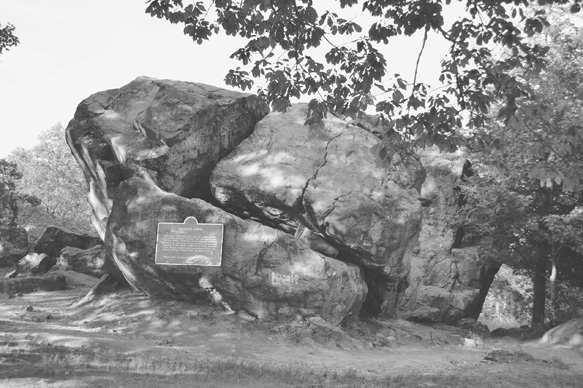Preface
If you drive about three miles north-west of Yale University, up the winding roads of New Haven’s West Rock Park, you come to a collection of large boulders. These rocks or ‘erratics’ were deposited between ten and twenty thousand years ago, when a layer of glacial ice melted at the end of the last ice age, leaving a small network of narrow passages that are just large enough to conceal two adults from public view. A small plaque on one of the rocks notes that this hiding place was used, in the 1660s, by two men who had been complicit in the trial and execution of Charles I, the only king in British history to be tried and then put to death. Indeed, these men had signed the king’s death warrant. On the run from agents sent to bring these regicides to justice, Edward Whalley and William Goffe concealed themselves in what is now called the ‘Judges Cave’ (the apostrophe has been removed). If we go forward three hundred and fifty years, the ‘cave’ is still there and is still being used for the purposes of concealment; though, in the early twenty-first century, this is the concealment of young couples anxious to keep their liaisons away from disapproving eyes. The rocks themselves are covered in graffiti (see Figure 1), some of which reflects the affection between various couples. The only inscription that appears to have any connection whatsoever to the devout Puritan regicides declares ‘Dear God, thank you for this cave’. It is unclear whether the graffiti’s author is thankful for its concealment of Whalley and Goffe, for its geological interest, or for the opportunity to pursue a relationship away from parental scrutiny.
This is not what one would imagine at a site that was for a long time revered as a symbol of America’s liberty and the fight against British ‘tyranny’. The cave was so symbolic of revolution, in fact, that the French revolutionary Charles Maurice de Talleyrand-Périgord, who contributed to the writing of The Declaration of the Rights of Man (1789), visited it in 1794 and ‘made a very animated and impassioned address in French in relation to [Whalley and Goffe], their amor patriae, and their love of freedom’.1 For centuries the cave has been visited by those interested in the story of the regicides and the myths and legends that have sprung up around them. This story of concealment would have been known, especially in the nineteenth century, by a large number of Americans. There was a time, as one journalist from the 1890s put it, when the story of Whalley and Goffe was ‘related in every school history’.2 Goffe went from being apprenticed to a London grocer in 1634 to being one of the most familiar characters in nineteenth-century American literature: a proto-American revolutionary. The regicides became the subject of fascination in many cultural forms, thousands of miles away from, and centuries after, their births. Now comparatively little attention is paid to the regicides in America or to the inscription on the cave in New Haven.
This book plots the rise and decline of the regicides in America—how and why they were celebrated (or, sometimes, criticized), and how and why their story was manipulated, twisted, and distorted to suit different political sympathies and cultural tastes, across three and a half centuries. Charles I’s Killers in America is not simply the story of the regicides on the run, as exciting as their flight may have seemed. Their story carries with it intriguing historical and ideological baggage that continued to be unpacked and repackaged in various cultural forms on both sides of the Atlantic, but especially in America, into the twenty-first century. So this book plots the lives and afterlives of Edward Whalley and William Goffe—and, to a lesser extent, John Dixwell, a third regicide in America—from their role in the English civil wars to the point at which the ‘Judges Cave’ turned from historical monument to make-out point. By investigating these ‘microhistorical’ figures over a long period of cataclysmic change it is possible to inform a number of wider issues: the relationship between crown and colonies in the late seventeenth century; the presence of the English regicide in debates surrounding the American Revolution; and the persistence of the regicides in America’s founding narratives and the forging of a distinct American national identity. We can see how one of the most dramatic moments in British history—the execution of Charles I—was remembered and represented across the Atlantic over subsequent centuries.
